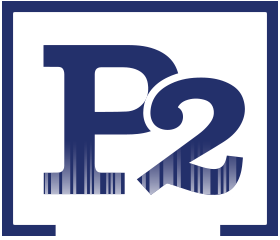FREE 30 Day DEMO This program converts text files exported out of AutoCad into the proper format for importation into any program that can import the KISS format.
This program converts text files exported out of AutoCad into the proper format for importation into any program that can import the KISS format.
The program consists mainly of four screens shown in Figures 1 through 4. A short description of each screen and its function in the program follows each figure.
Main Conversion Screen
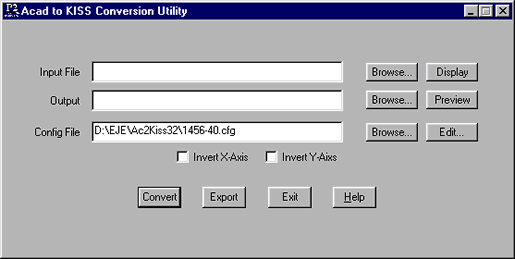
Figure 1 – Main Conversion Screen
The screen shown in Figure 1 is the main screen that appears when the Ac2Kiss.Exe program is executed. The screen consists of three input fields and several push button options.
Input File Field
The Input File field is the location of the source text file that was exported from AutoCAD. This file is created within AutoCAD by running the ORDBIL.LSP or the ATTRIB.LSP program. You can also specify a wildcard “*.orb” or even a wildcard with a path (“c:\ac2kiss32\dwgs\*.orb”) in the input field to process more than one file.
Note: To process more than one file, you must have already created the configuration file for this set of drawings and the ORB files that you are wanting to process. You do this by calling up a single ORB file and then creating the configuration file to match its layout. After completing the process of creating the configuration file, you can then go back and enter a wildcard Input File name.
Output Field
The Output field is the name of the text file that will be created after the conversion process has been completed. If the output file already exist when you click on the Convert button, you will be prompted to Append, Overwrite or Cancel the conversion process.
Config File Field
The Config File is the name of the configuration file that will be used in converting the AutoCAD data into the KISS format. Multiple configuration files are needed when you have several vendors supplying you with AutoCAD ORB files that contain different BOM structures. If you are processing several ORB files (*.orb), they must all conform to the same configuration file. To edit the configuration file, click on the Edit button.
Example: Vendor A’s bill of material contains five columns of data (quantity, material, piece mark, weight and minor piece mark) while Vendor B’s bill of material is in a different order (quantity, material, piece mark, minor piece mark and weight). In this case, you would create a different configuration file for each vendor to accommodate the different layouts of the bills.
Edit Push Button
The Edit push button will take you to the Column, Material and Fractions configuration window. This is where you would specify the columns and type of data being converted. For a description of this screen and its function, see Figure 2.
Convert Push Button
The Convert push button will start the conversion process and when complete, will present a message stating that it is complete. This is the push button you would use to convert the data into a KISS compatible format.
Export Push Button
The Export Text push button will export the data in a delimited format using the tilde ‘~’ as a delimiter between the columns. During the export process, all the fractions and material types will be converted into their proper format from the information found in Configuration window.
Conversion Screen
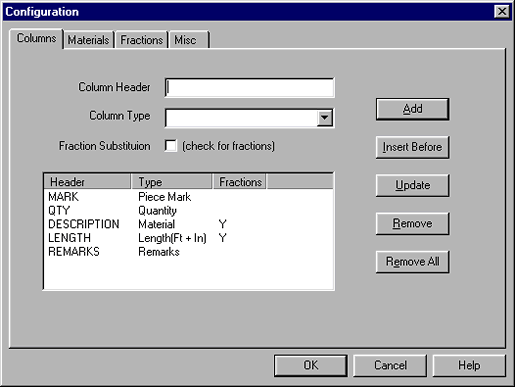
Figure 2 – Material Tab, Configuration Screen
Column Header Field
The Column Header field is where you would type in the text that appears at the top of a column on your bill of material. For example: If the top of your materials column on your BOM is “DESCRIPTION”, you would enter this word into the Column Header field. Note: The Column Headers have to be unique and in the order as they are shown on the BOM from left to right. Column headers on the left side of the BOM should be at the top of the list with the ones on the right being at the bottom. For stacked column headers (i.e. “Ship Mark” with Ship on one line and Mark underneath), you can use either word in the Column Header field but we suggest and prefer that you use the lower of the two, in this case the word “Mark”.
Column Type List
The Column Type list is used to identify the type of data that this column on the BOM contains. For example, the column that contains the description of the materials (W12x40, etc.) would be identified as “Material”.
Most of the types are self explanatory except for the types representing piece marks. There are three types of piece marks, Major PC Mark, Minor PC Mark and Piece Mark. If you identify a column as a “Major PC Mark”, regardless of the case (upper or lower) of the piece marks in this column, all of the piece marks will be converted to upper case. This is just the opposite for “Minor PC Mark”. All of the piece marks will be converted to lower case characters if the column is identified as “Minor PC Mark”. If you use the type “Piece Mark”, the system will not convert the case of the piece marks in this column. If you used a combination of upper and lower case characters in this column, they will remain the way that you entered them on the BOM.
Fraction Substitution Check Box
The Fraction Substitution check box is used to identify columns of data on the BOM that use fractional substitution characters. If this column of data uses fractions substitution (i.e. a = 1/16, b=1/8, etc), click on the box next to the Fraction Substitution text. Be sure to confirm that the codes used for fractions match the codes in the Input File. You can check the fraction character set by clicking on the Fractions tab at the top of the Configuration window. See Figure 7 for more information on the Fractions window.
In most cases, vendors use different codes to represent the same material types. Selecting the Material push button will display the screen in Figure 3. On this screen you will identify the various codes for all the material types recognized by KISS. For further information on the Material Configuration screen, see Figure 3.
Material Configuration
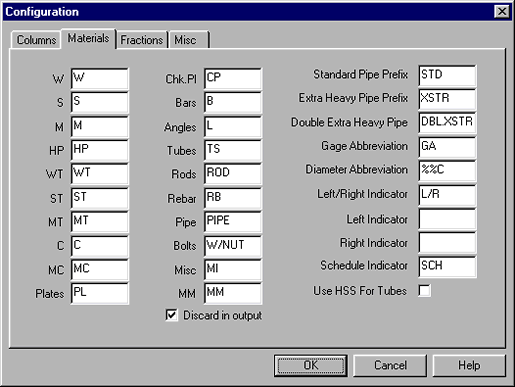
Figure 3 – Material Codes Configuration Screen
The Materials window, shown in Figure 3, is used to identify all the material type codes found on the bill of material to the conversion utility. The material codes that the KISS format expects to see upon import are shown to the left of the input fields. The codes that are being used on your BOM should be keyed into the fields beside the standard codes. When you click on the Convert or Export button on the Main window, the utility will convert the codes in the input fields to their corresponding standard code during the conversion process.
You can enter characters from the extended ASCII character set by holding down the ALT key on your keyboard and keying in the four digit numerical code that represents the character (you must use the numerical keypad for this operation) that is in your bill of material. If the code is only three characters long, proceed the number with a zero.
Also, there is a check box just below the MM material type. This option can be checked if your BOM contains main member information (Beam, Column, Diagonals, etc.) and you do not wish to have this information transferred into the KISS file. If checked, the MM material line in the BOM will be discarded and the next line in the BOM will become the major piece mark.
Fractional Substitution Configuration
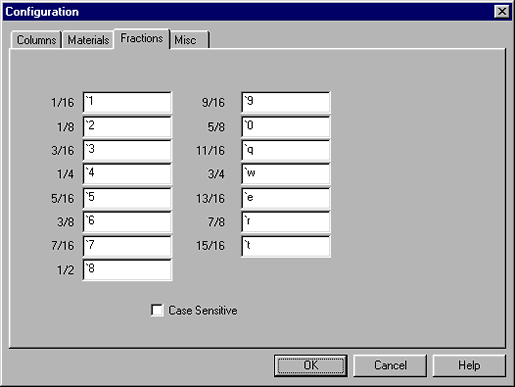
Figure 4 – Fractional Substitution Configuration Screen
The Fractions window, show in Figure 4, is used to identify the characters that represent fractions in the Input File. This window determines the relationship between the characters in the Input File and how you want them represented in a numerical fashion after you click on the Convert or Export buttons on the Main window. If you click on the Case Sensitive box, this will make the test of the substitution characters case sensitive. For example, if the Case Sensitive box has been check, a lower case letter “a” is not the same as an upper case letter “A”. If the Case Sensitive box is not checked, a lower case letter “a” is the same as an upper case letter “A”.
You can enter characters from the extended ASCII character set by holding down the ALT key on your keyboard and keying in the four digit numerical code that represents the character (you must use the numerical keypad for this operation) that is in your bill of material. If the code is only three characters long, proceed the number with a zero.
Example AutoCad File (ORB File)
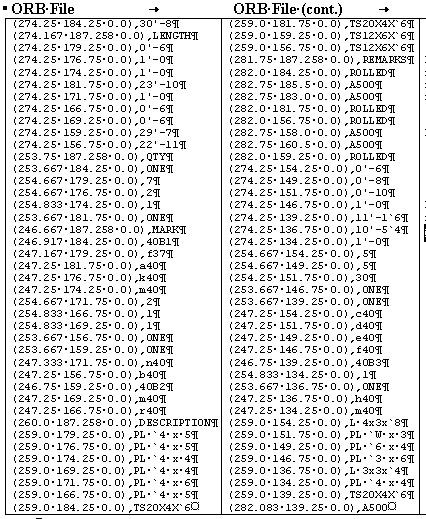
Example KISS Import File (Conversion Output File)
KISS,1.0,ac2kiss V2.0 (C) 1999 P2 Programs
D,,,40B1,40B1,1,TS,20x4x.375,A500-Gr B,9347.20,,ROLLED
D,,,40B1,a40,1,TS,20x4x.375,A500-Gr B,7264.40,,ROLLED
D,,,40B1,f37,7,PL,1/4×5,A36,152.40,,
D,,,40B1,k40,2,PL,1/4×5,A36,304.80,,
D,,,40B1,m40,1,PL,1/4×4,A36,304.80,,
D,,,40B1,n40,2,PL,1/4×6,A36,304.80,,
D,,,40B1,m40,1,PL,1/4×4,A36,152.40,,
D,,,40B1,r40,1,PL,1/4×5,A36,152.40,,
D,,,40B2,40B2,1,TS,12x6x.375,A500-Gr B,9017.00,,ROLLED
D,,,40B2,b40,1,TS,12x6x.375,A500-Gr B,6985.00,,ROLLED
D,,,40B2,c40,5,L,4x3x1/2,A36,152.40,,
D,,,40B2,d40,30,PL,3/4×3,A36,254.00,,
D,,,40B2,e40,5,PL,3/8×4,A36,203.20,,
D,,,40B2,f40,1,PL,3/16×6,A36,304.80,,
D,,,40B3,40B3,1,TS,20x4x.375,A500-Gr B,3387.72,,A500
D,,,40B3,h40,1,L,3x3x1/4,A36,3181.35,,
D,,,40B3,m40,1,PL,1/4×4,A36,304.80,,
Example Export File (Export Text Output File)
~~~~A500
40B1~1~TS20X4X 3/8~30′-8~ROLLED
~~~~A500
a40~1~TS20X4X 3/8~23′-10~ROLLED
f37~7~PL 1/4 x 5~0′-6~
k40~2~PL 1/4 x 5~1′-0~
m40~1~PL 1/4 x 4~1′-0~
n40~2~PL 1/4 x 6~1′-0~
m40~1~PL 1/4 x 4~0′-6~
r40~1~PL 1/4 x 5~0′-6~
~~~~A500
40B2~1~TS12X6X 3/8~29′-7~ROLLED
~~~~A500
b40~1~TS12X6X 3/8~22′-11~ROLLED
c40~5~L 4X3X 1/2~0′-6~
d40~30~PL 3/4 x 3~0′-10~
e40~5~PL 3/8 x 4~0′-8~
f40~1~PL 3/16 x 6~1′-0~
40B3~1~TS20X4X 3/8~11′-1 3/8~A500
h40~1~L 3X3X 1/4~10′-5 1/4~
m40~1~PL 1/4 x 4~1′-0~
